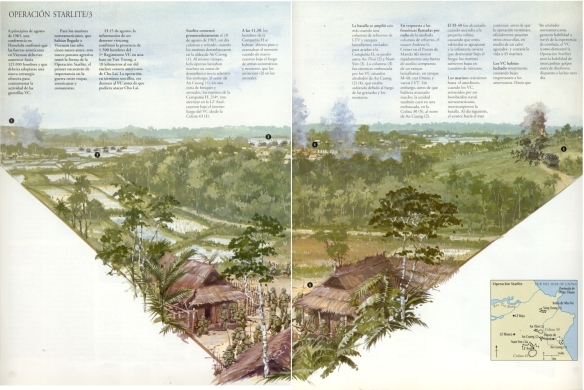
A controversial term used to describe the American approach to ground combat in Vietnam in the period from 1964 to 1968. Allegedly developed by General William Westmoreland, commander of the Military Assistance Command, Vietnam (MACV), and some of his staff officers, search and destroy was used to support the strategy of victory by attrition. According to this strategy, American troops would exact such heavy losses on both the Viet Cong (VC) and the North Vietnamese Army (NVA) that both would, in time, lose their willingness to fight. Westmoreland, who denied that search and destroy was ever a specific tactic, hoped that it would simultaneously minimize U.S. casualties.
The key to search and destroy was American superiority in equipment and technology. American forces would be dropped by helicopter, or march in from base camps, to areas that had perhaps already been cleared of jungle cover by napalm or defoliation attacks. They were to locate VC or NVA units, fix them in place, and destroy them as well as their base areas and stocks of supplies. Then, U.S. troops could be lifted out again by helicopter. The strategy was not designed to take and hold enemy territory.
Not all military commanders agreed with Westmoreland’s approach, and in time search and destroy proved ineffective. One reason why was a steady supply of NVA reinforcements, which negated the tactic of attrition. Another was the fact that Communist forces, rather than American ones, frequently initiated the fighting and often chose to fade away before search-and-destroy tactics could begin. Moreover, many U.S. politicians and ordinary citizens, when they learned of search-and-destroy missions or saw pictures of operations taken by soldiers or journalists, were horrified at the violence and brutality, especially when it seemed like entire villages were being destroyed for no reason. Still others wondered why the tactic did not result in taking territory, rather than simply upping the enemy body count.
This approach to ground combat began to shift to more conventional fixed battles in 1969, by which time Westmoreland had been replaced as MACV commander and more of the fighting turned over to the South Vietnamese army.